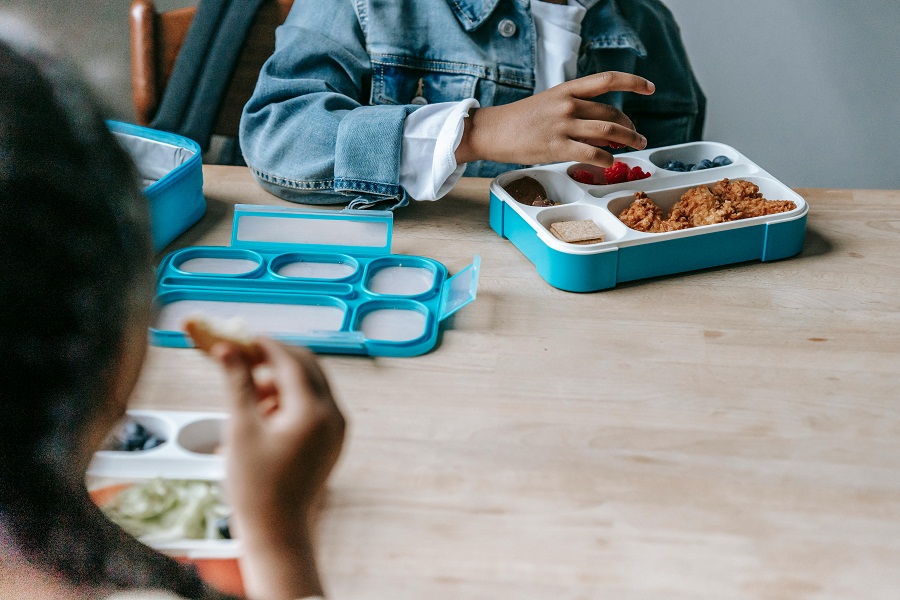
Published :
Updated :

It always began with the bell. The piercing metallic noise broke the morning cacophony of lectures and classes. For a few seconds, everything stayed still. Then the benches moved, shoes tapped the floor, and students rushed out of the classroom. Some ran to the field, some to the corridors, clutching small tiffin boxes in their hands. These boxes carried more than just food. They took comfort, care, and something that felt like home.
Tiffin break was never just about eating. It was the pause between Geometry and English, the small gap between lectures and disciplines.
It was the time when classroom rules faded. Friends came together.
A slice of apple was traded for half a sandwich. A piece of biscuit was exchanged for a sweet. Quiet deals were made with smiles. These small acts shaped the school day.
Every tiffin box, whether steel or plastic, held a piece of someone's story. Each child brought something from home. Some had parathas rolled with sugar. Some had banana chips or leftover curry and rice. Others brought biscuits, which were commonly found in many school bags in the early 2000s. These boxes were not all the same, but the feelings they carried were.
Shingara, alur chop, puri, and chanachur were the most common choices. Some grabbed packets of Ring Chips, Potato Crackers, or Cocola biscuits. Ice lollies melted under the sun.
The canteen was a world of its own. Loud voices, quick orders, and students trying to buy before the next bell rang. Some schools even provided tiffin to students. The menu was often the same for years, but the excitement never faded.
The food was never fancy, but the excitement was tangible. Friends sat in circles under trees or on classroom benches. There was always that one student who had the best tiffin, and everyone knew whose tiffin was worth waiting for. For many, these moments became lasting memories. "My favorite memory is that my friends and I used to sit together in the field and have tiffin. I will always remember school life this way," recalled Nayna Afrose, who studied at Agrani School and College in the early 2000s. Her words shared the experience of countless others whose friendships were forged over bites and laughter.
As time passed, the tiffin box changed. The old silver boxes began to fade. Plastic containers with cartoon stickers became common.
Some had compartments. Some had small spoons inside.
Today, parents prepare lunch with more variety. Some follow online ideas to decorate the tiffin like a bento box. In cities, many parents are busy. They cannot always make time to cook in the morning.
Anika Tasnim, a sixth-grade student, shared her routine. "My mother cannot prepare meals every day, so I make them sometimes. I also like to buy nuggets from a shop near our school." The habits might have changed, but the importance of tiffin remains the same.
The memories of those old school tiffins are still strong. People who attended school in the 1990s or early 2000s often smile when they hear the word 'tiffin.'
Their eyes light up. They remember the taste of someone else's lunch. They remember the field, the circle of friends, and the race to finish eating before the bell rang again.
For many people, those tiffin memories remain the most genuine part of school life. The box we carried held not just food, but care. It took a mother's early morning effort, a father's reminder not to lose it, and a friend's laughter during every bite.
Tiffin was more than food. It was a small act of care from home. A packed box meant effort. It meant love. It meant something familiar in a long day of rules and routines.
Now, many of us sit at office desks or college benches. We order food. We eat in a rush. We scroll on our phones while chewing. But sometimes, at noon, when hunger comes quietly, we remember that old bell. The one that rang for tiffin. The one that meant more than food. It meant friendship, freedom, and the simple joy of opening a box that felt like home.
malihatasnim02215@gmail.com


 For all latest news, follow The Financial Express Google News channel.
For all latest news, follow The Financial Express Google News channel.